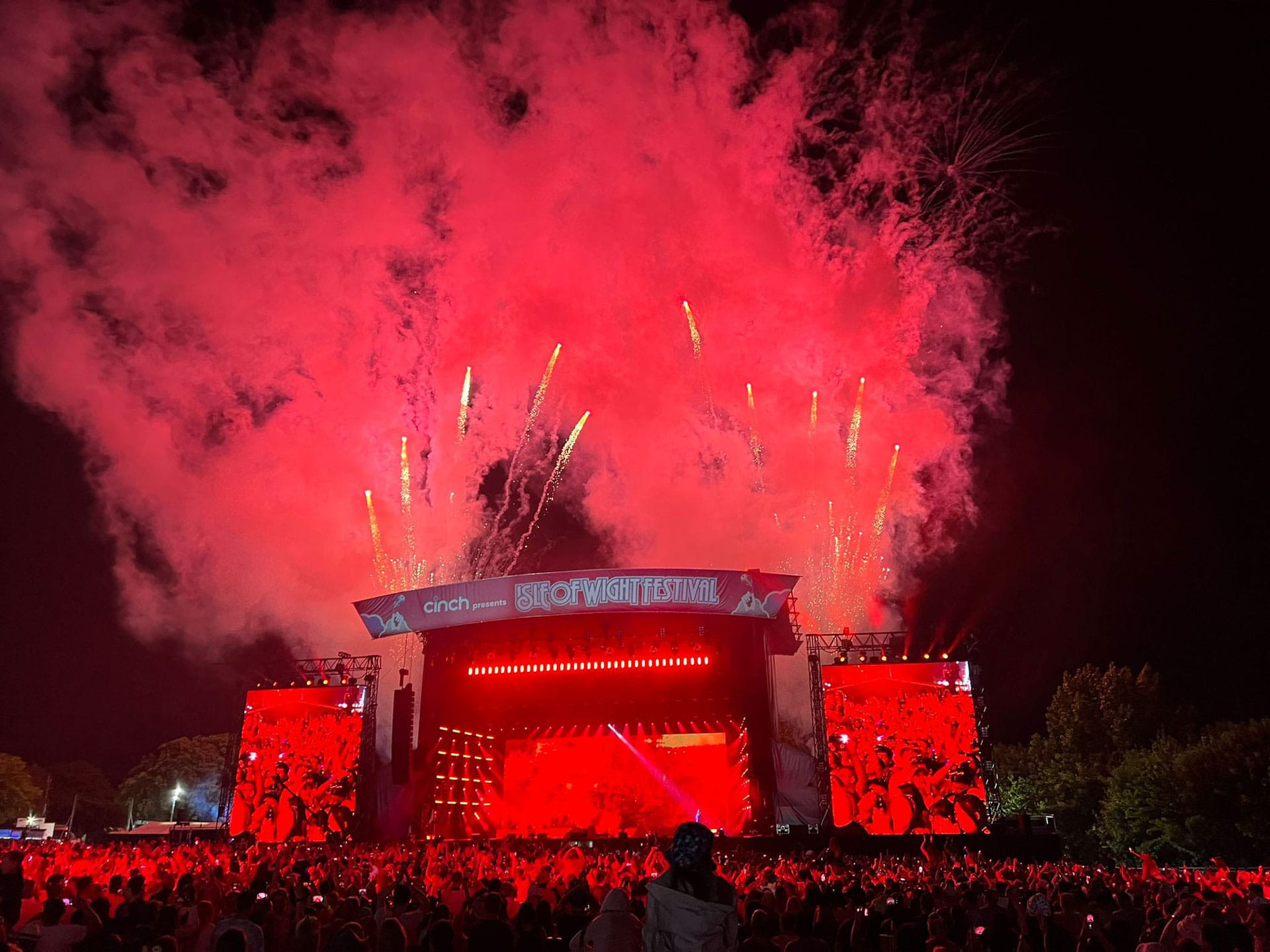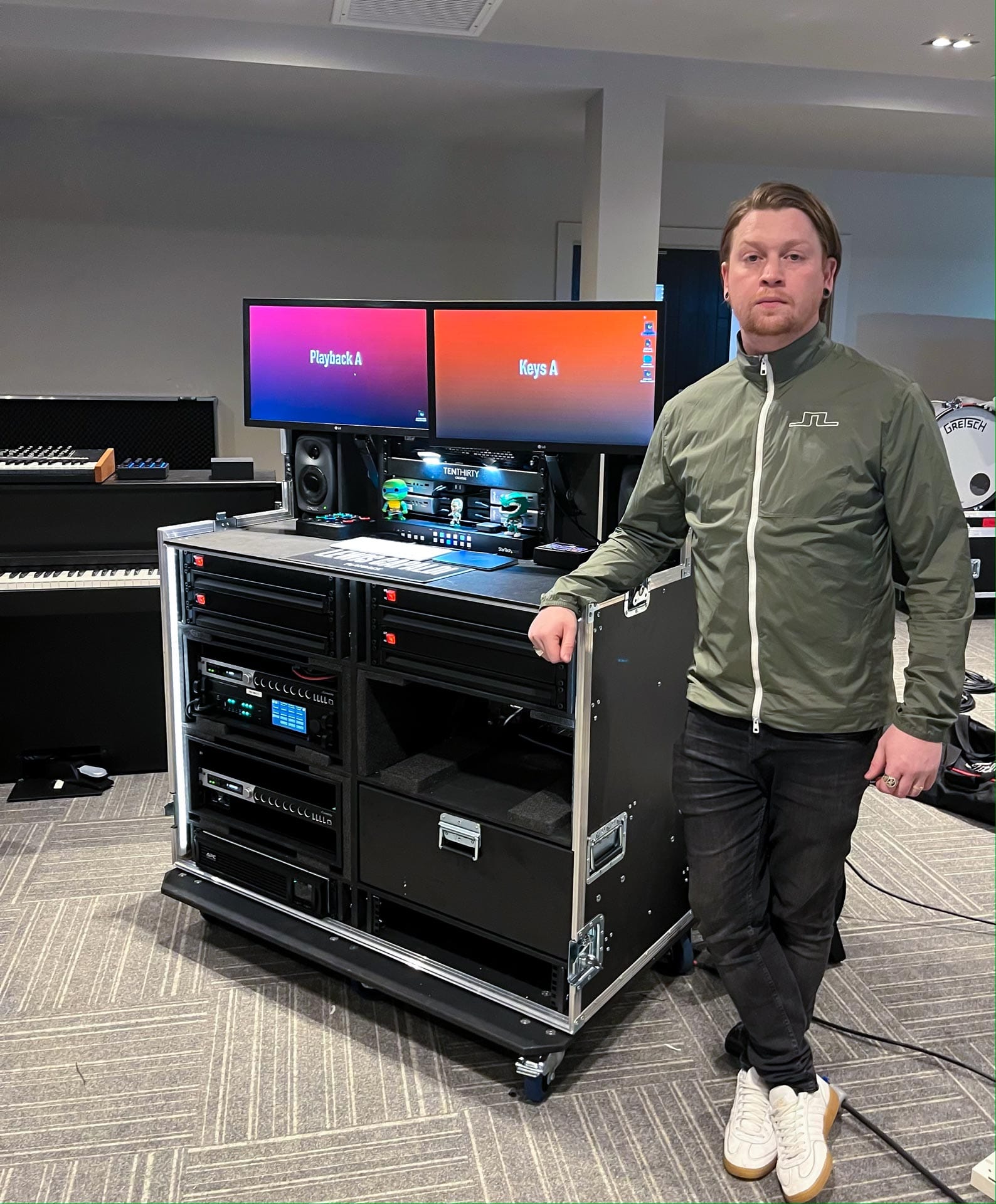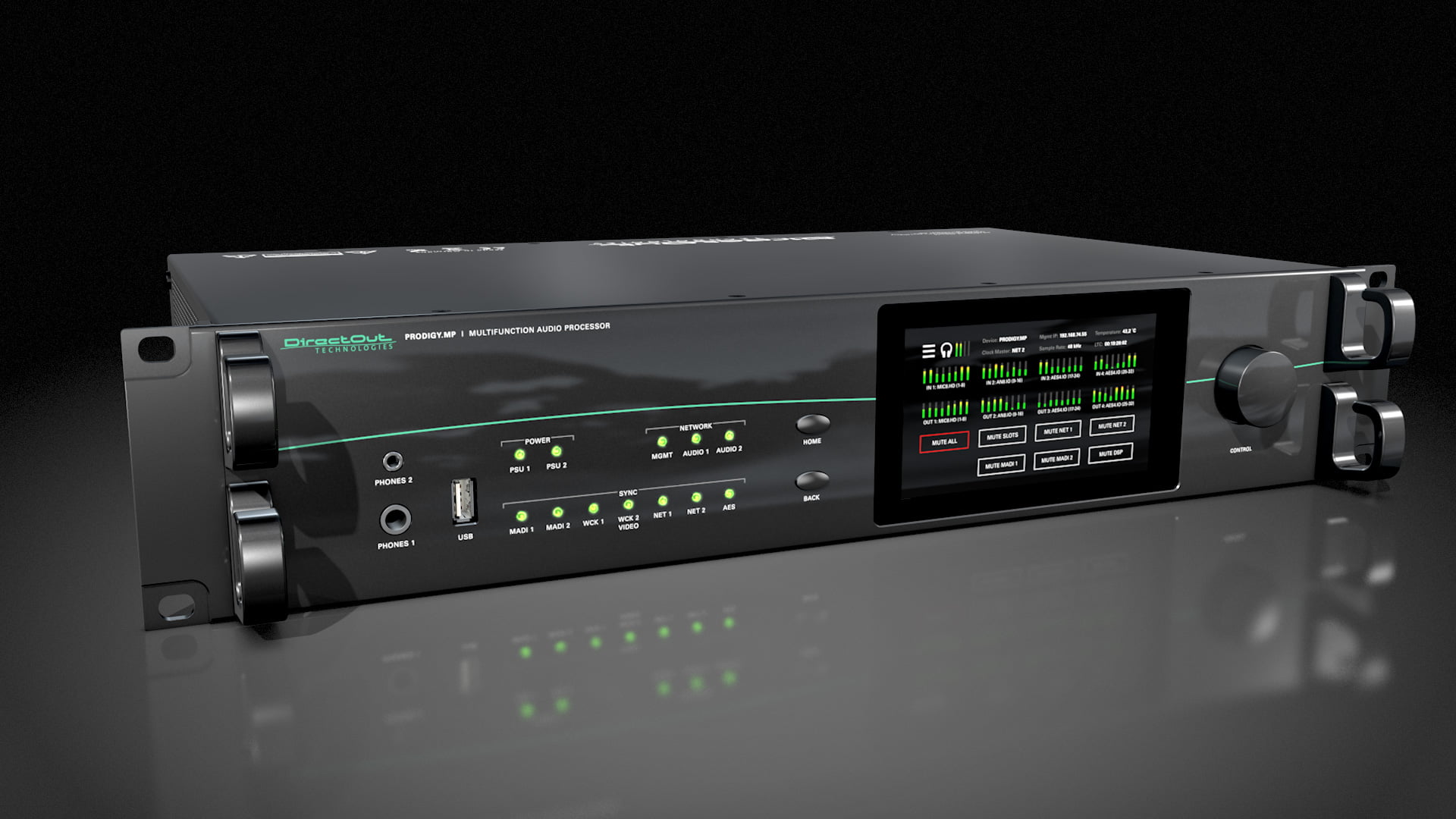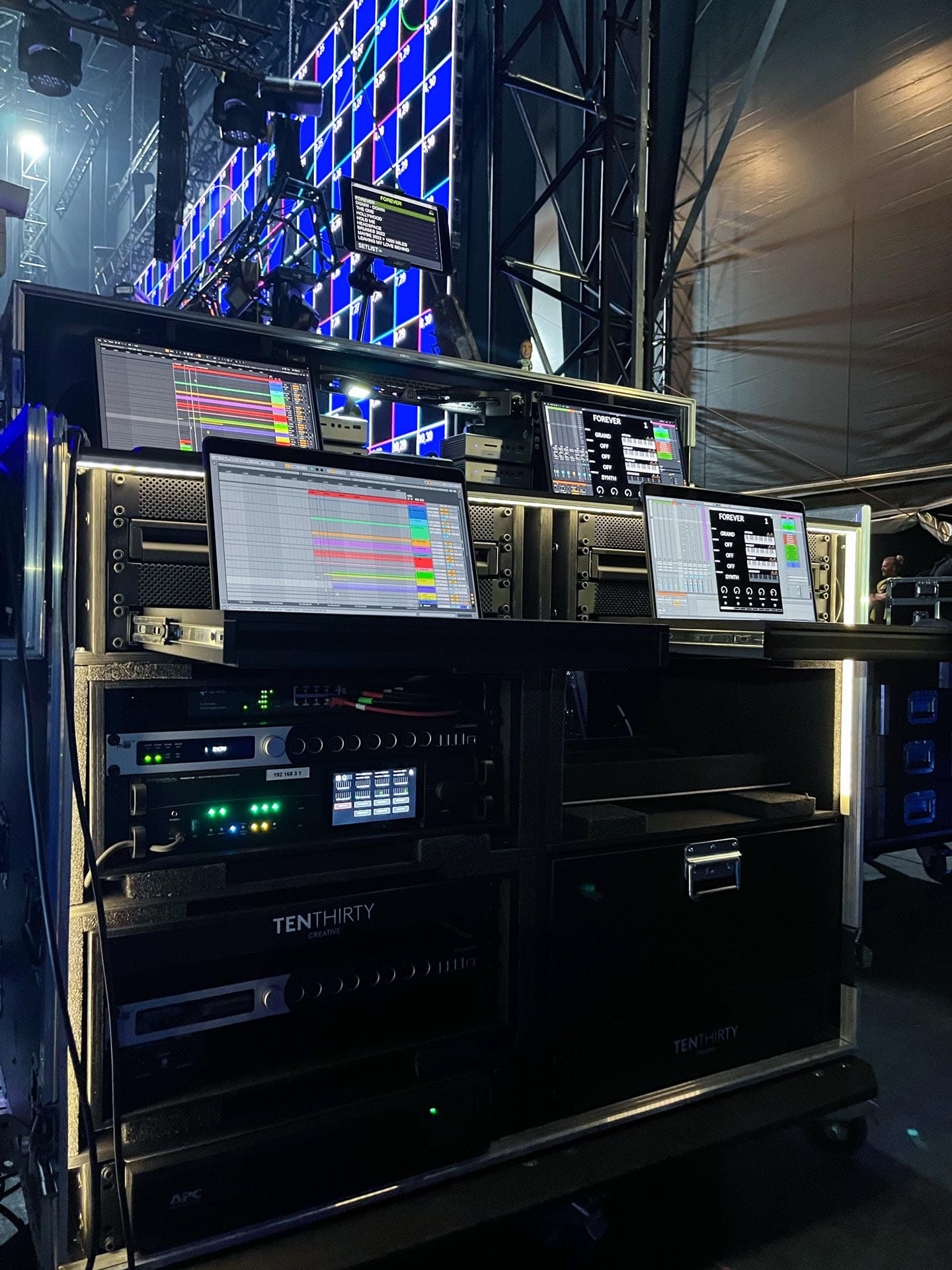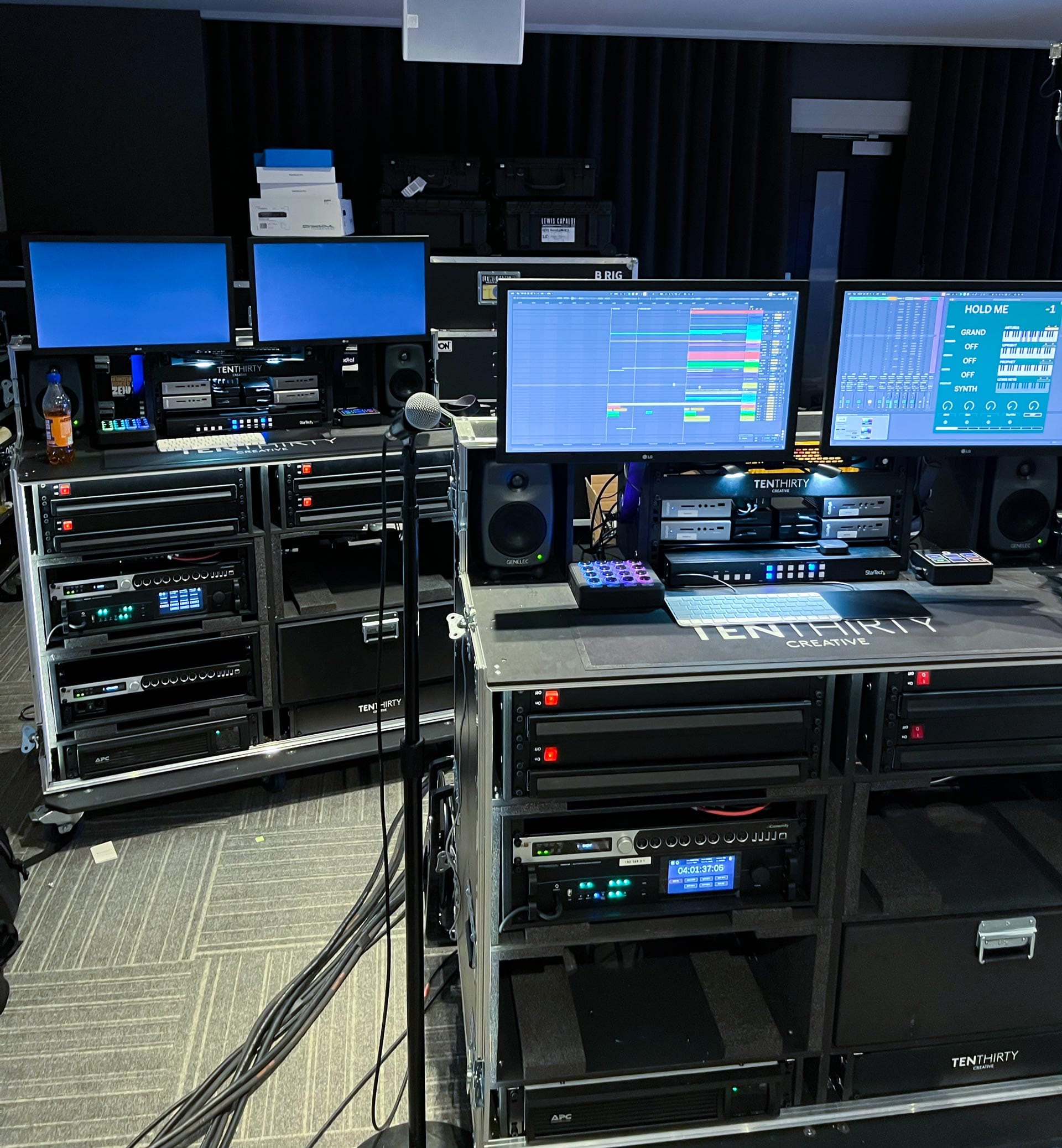You could be at a festival or at a stadium one day, and at a radio station the next day. So in my head I was thinking, I want a sort of Swiss Army knife…Paul Docherty
However, the DirectOut PRODIGY.MP proved to be an all-in-one 2RU device that fulfilled his playback rig’s total redundancy requirements for two complete sets of auto-changeover, routing and conversion.
DirectOut PRODIGY is a fully modular device which allows great flexibility in terms of supporting different audio formats, and crucially also includes the previously mentioned EARS™ technology. PRODIGY.MP simultaneously accepts two audio networking modules, two Madi modules and up to 32 channels of analog or AES3 local I/O. Adopting a single PRODIGY.MP equipped with two DANTE.IO modules gave Paul the possibility of cutting down rack-space, but still covering the total quantity of Dante channels he needed; and, in the same device, all the analog and Madi outputs required. All with just two standard IEC power connections!
“I could have two Dante modules, which would provide 32 channels each for two separate redundancies. I could have 32 channels with redundancy for tracks on one Dante module, and another 32 redundant channels for instruments on the second module,” comments Paul. “Along with that, I could have my choice of outputs, whether they would be Madi (BNC and SC fibre) and analogue… the options were endless. And all of it in this one 2U rack.”
I'm cutting down not only the rack size for when we have a full truck production, but the same size works perfectly for my flying rig!
And in Paul’s opinion, this new way of looking at PRODIGY.MP could really set a standard in playback rigs: “I do think that playback techs will start looking at a system like the PRODIGY to travel with. You can have it in a 2U rack and a Peli case and have it as hand-carry on a commercial airliner if needed. And I think that, under the usual budgetary restraints, I would be doing the same and just taking it everywhere with me.”
DirectOut PRODIGYs not only offer hardware modularity, but also employ a software license model for the scope of functionality provided by each unit, to match every production’s needs and budget. In the case of these playback rigs, Paul decided to go for the PRODIGY.MP Essential System License, which leaves out all the DSP. This cuts down the costs, but still includes all the switching and resilience features for his playback systems.
“I bought the license without DSP because all the mixing and everything like that is taken care of by the audio world. I couldn't really see any need for me to use DSP from where I am as a playback engineer. But I can always go back, and update it, if I need to.”
I think what's been important for me is that people at DirectOut are very open to listening to our thoughts on how a system is operating and how it could potentially be better. Not a lot of companies will take that on board and then actually develop it. One thing about DirectOut that really impresses me is that this does actually happen.
